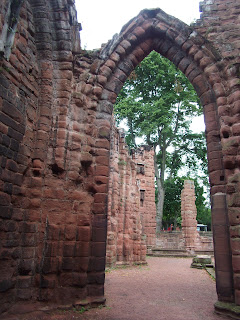Chester is a city in Cheshire, England.
Lying on the River Dee, close to the border with Wales, and was granted city
status in 1541. It was founded as a Roman fort with the name Deya Victrixin the
year 79 by the Romans. Chester's four main roads, Eastgate, Northgate,
Watergate and Bridge, follow routes laid out at this time – almost 2,000
years ago. After the Romans left in the 5th century, the Saxons fortified the
town against the Danes and gave Chester its name.
Chester has a number of medieval buildings, but
some of the black-and-white buildings within the city centre are actually Victorian
restorations. Chester is one of the best preserved walled cities in Britain.
Apart from a 100-metre (330 ft) section, the listed Grade I walls are
almost complete
The more unusual landmarks in the city are the city
walls and the black-and-white architecture. The walls encircle the bounds of the medieval city with the full
circuit measuring nearly 2 miles (3 km). On East gate is East gate clock which is said
to be the most photographed clock in England after Big Ben.
The Rows
are unique in Britain; they consist of buildings with shops or dwellings on the
lowest two storeys. The shops or dwellings on the ground floor are often lower
than the street and are entered by steps, which sometimes lead to a crypt like
vault. Those on the first floor are entered behind a continuous walkway, often
with a sloping shelf between the walkway and the railings overlooking the
street. Much of the architecture of central Chester looks medieval and some of
it is. But by far the greatest part of it, including most of the
black-and-white buildings, is Victorian.
The most prominent buildings in the city centre are
the town hall and the cathedral. The town hall was opened in
1869. It is in Gothic Revival style and has a tower and a short spire. The
cathedral dates back to the Norman era, with additions made most centuries
since. A series of major restorations took place in the 19th century and
in 1975 a separate bell tower was opened.
Roman remains can still be found in the city,
particularly in the basements of some of the buildings and in the lower parts
of the northern section of the city walls. The most important Roman feature is
the amphitheatre just outside the
walls which is undergoing archaeological investigation. Roman artefacts are on display in the Roman
Gardens which run parallel to the city walls from New gate to the River Dee.







































